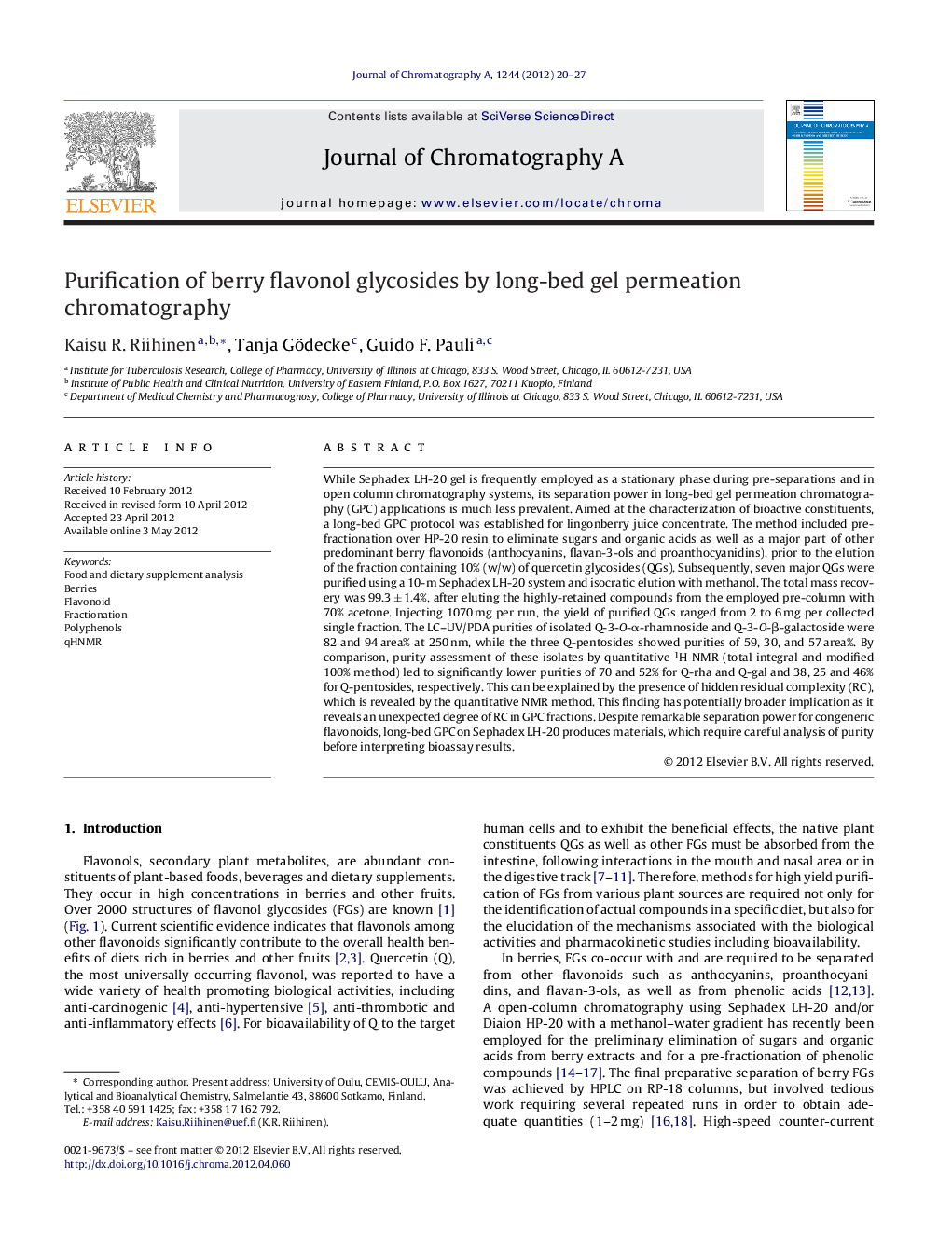| Article ID | Journal | Published Year | Pages | File Type |
|---|---|---|---|---|
| 1200676 | Journal of Chromatography A | 2012 | 8 Pages |
While Sephadex LH-20 gel is frequently employed as a stationary phase during pre-separations and in open column chromatography systems, its separation power in long-bed gel permeation chromatography (GPC) applications is much less prevalent. Aimed at the characterization of bioactive constituents, a long-bed GPC protocol was established for lingonberry juice concentrate. The method included pre-fractionation over HP-20 resin to eliminate sugars and organic acids as well as a major part of other predominant berry flavonoids (anthocyanins, flavan-3-ols and proanthocyanidins), prior to the elution of the fraction containing 10% (w/w) of quercetin glycosides (QGs). Subsequently, seven major QGs were purified using a 10-m Sephadex LH-20 system and isocratic elution with methanol. The total mass recovery was 99.3 ± 1.4%, after eluting the highly-retained compounds from the employed pre-column with 70% acetone. Injecting 1070 mg per run, the yield of purified QGs ranged from 2 to 6 mg per collected single fraction. The LC–UV/PDA purities of isolated Q-3-O-α-rhamnoside and Q-3-O-β-galactoside were 82 and 94 area% at 250 nm, while the three Q-pentosides showed purities of 59, 30, and 57 area%. By comparison, purity assessment of these isolates by quantitative 1H NMR (total integral and modified 100% method) led to significantly lower purities of 70 and 52% for Q-rha and Q-gal and 38, 25 and 46% for Q-pentosides, respectively. This can be explained by the presence of hidden residual complexity (RC), which is revealed by the quantitative NMR method. This finding has potentially broader implication as it reveals an unexpected degree of RC in GPC fractions. Despite remarkable separation power for congeneric flavonoids, long-bed GPC on Sephadex LH-20 produces materials, which require careful analysis of purity before interpreting bioassay results.
► 10-m Sephadex system provides a powerful means of resolving flavonoids. ► The total mass recovery of berry components from Sephadex LH-20 gel was 99.3%. ► A long-bed Sephadex system combines attractive recovery and repeatability. ► Unexpected degree of residual complexity appeared in flavonol glycosides.
